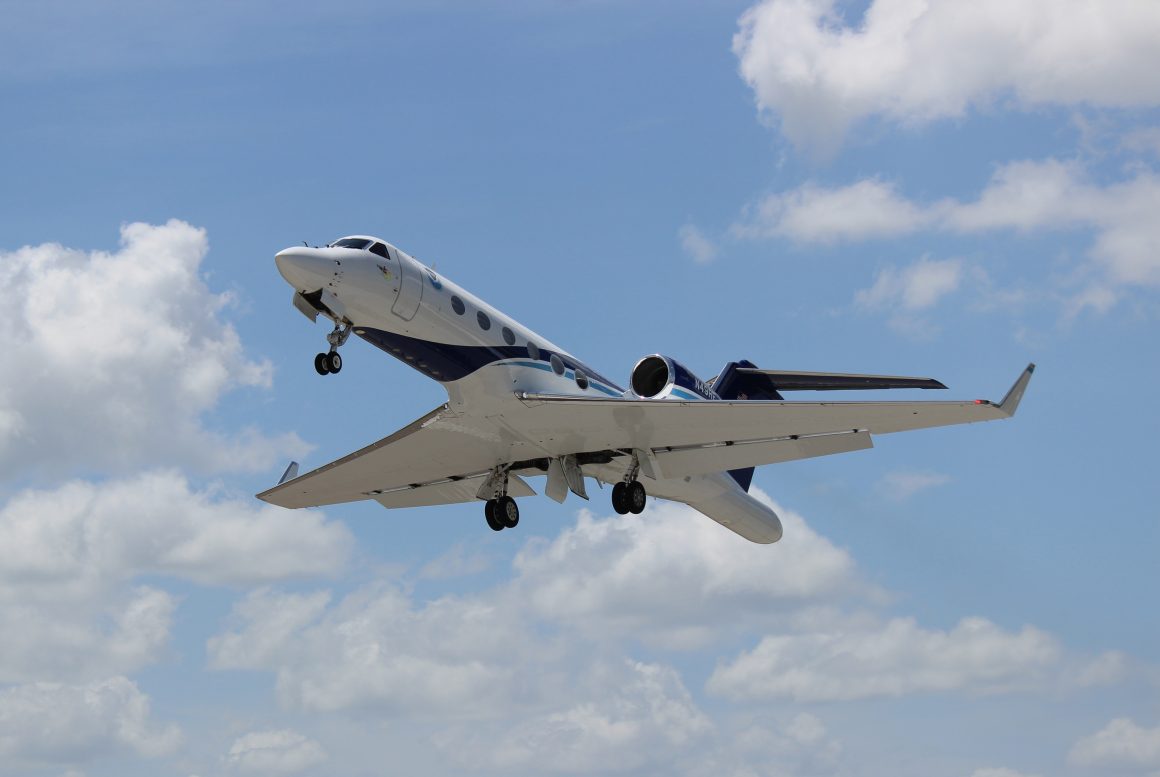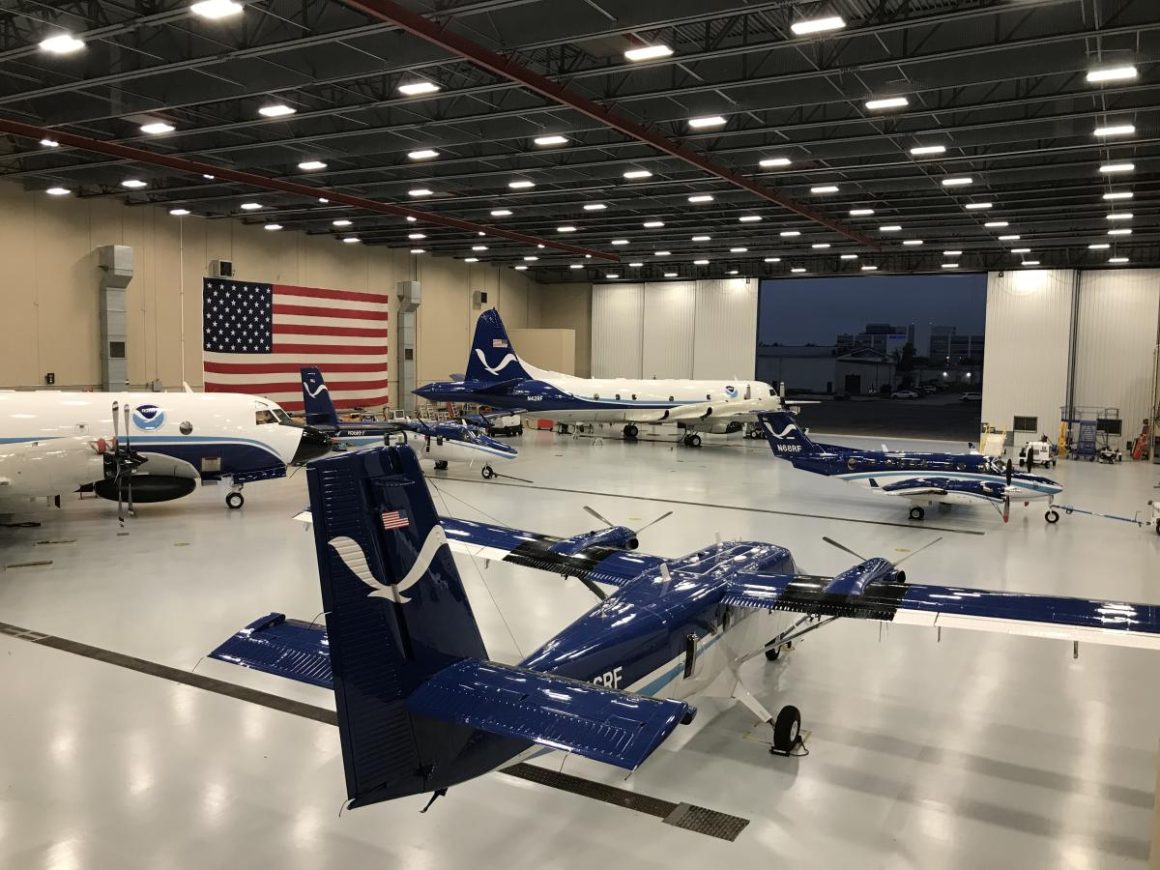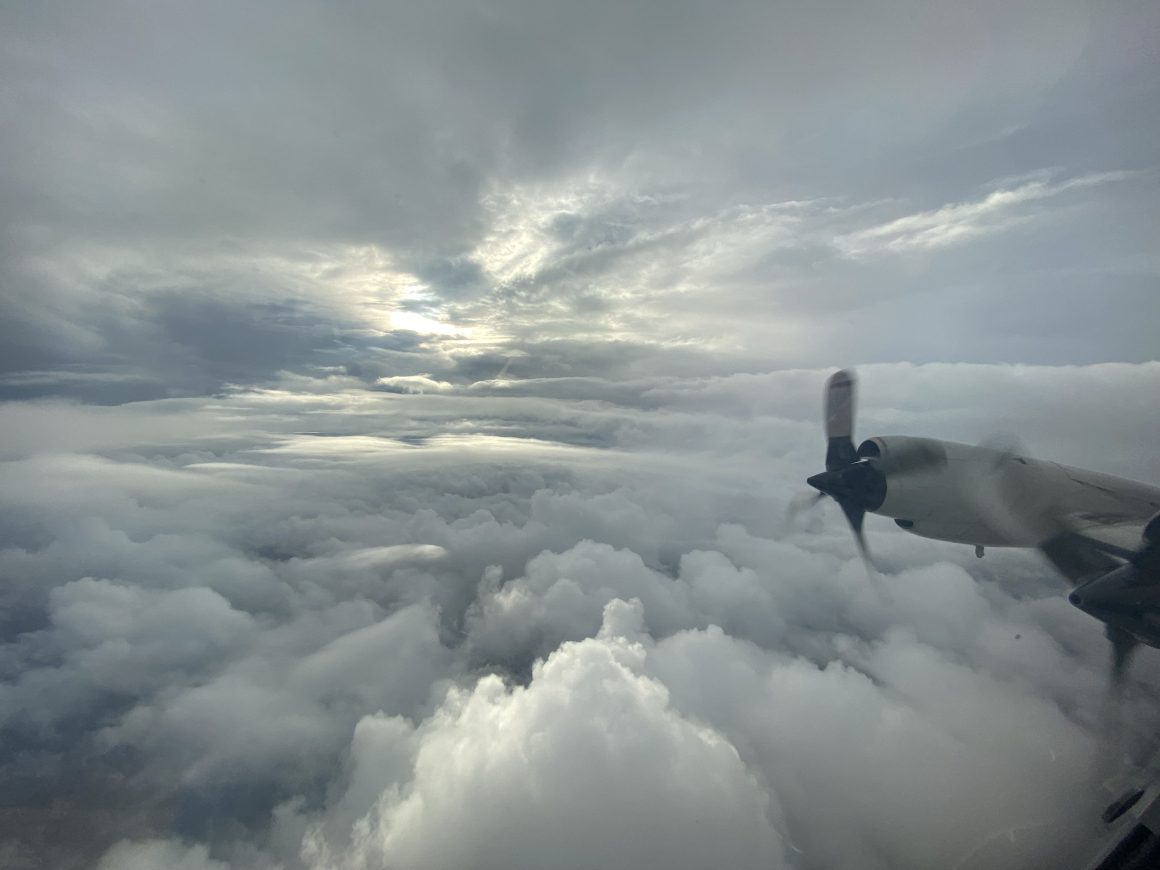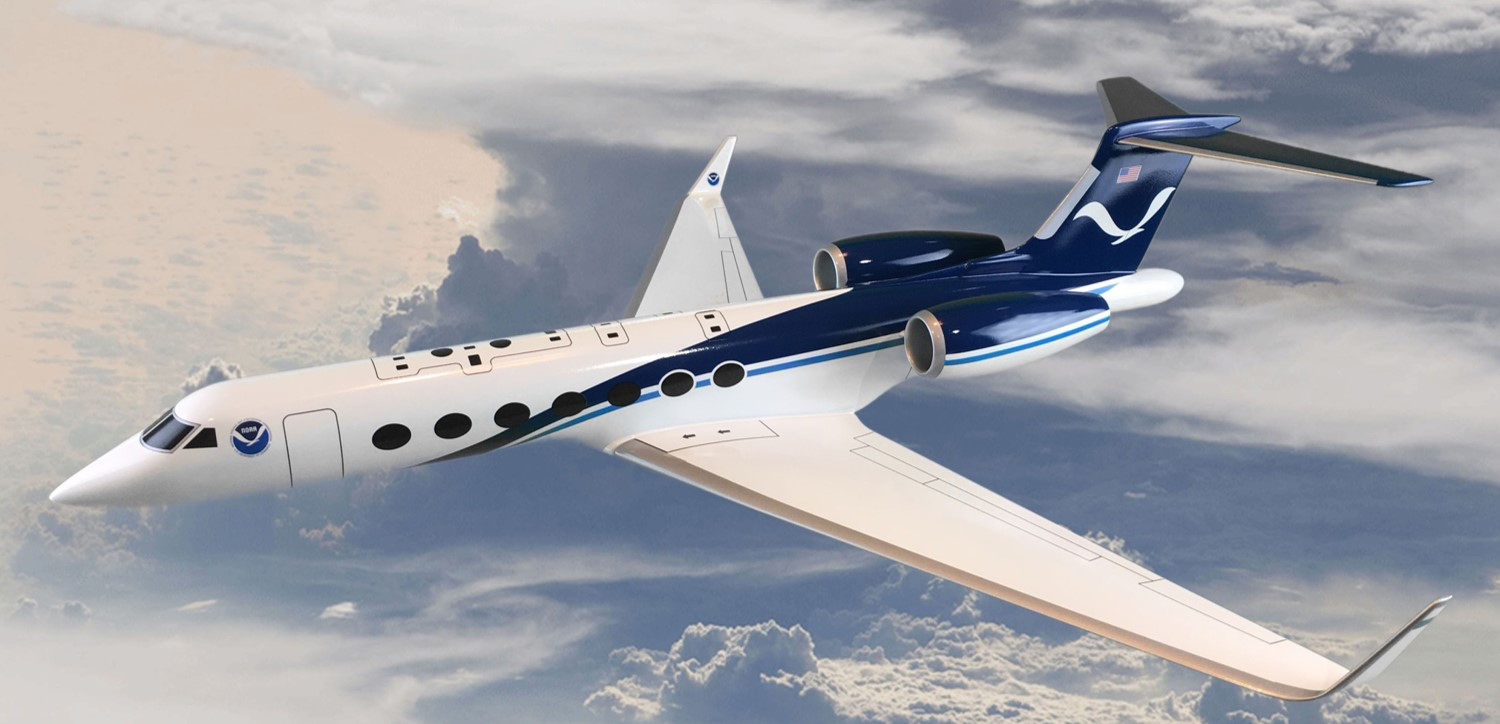We’ve all seen the images on the Weather Channel. As a hurricane bears down on the United States, the heartbreaking (yet stunning) images captured by Hurricane Hunter aircraft within sight are beamed through our television screens to our living rooms.
While hurricane hunter aircraft have been around for decades, the National Oceanic and Atmospheric Administration (NOAA) decided it was time for another upgrade.
The National Oceanic and Atmospheric Administration announced this week that a second high-altitude jet will join its fleet of hurricane hunters.
NOAA’s G550 will replace the old Gulfstream IV-SP

NOAA’s new fleet is a heavily modified Gulfstream G550, which was awarded to Gulfstream Aerospace Corporation in Savannah, Ga. The bipartisan inflation-reduction bill signed by President Biden in 2022 provided the primary funding for the $106 million deal.
The new G550 will join the fleet in 2028, NOAA said.
The first G550 ordered by NOAA in 2019 will be delivered early next year, just in time for the 2025 hurricane season. The aircraft will replace the agency’s aging Gulfstream IV-SPThe aircraft has been an integral part of the Hurricane Hunters fleet since 1996. The addition of a second G550 will significantly enhance NOAA’s capabilities in hurricane and tropical storm forecasting, atmospheric research and other critical missions.
Gulfstream Aerospace President Mark Burns said his company has been supplying aircraft to the U.S. government for more than 50 years.
“We are proud to continue our partnership with NOAA on the G550,” Burns said in 2019. “Our aircraft platform provides government and military customers with the flexibility, range and altitude capabilities that are ideally suited for demanding missions.”
Flying over the storm

The G550s are no ordinary business jets, they are specially modified with advanced systems designed to improve the accuracy of weather forecasts. A notable feature of these aircraft is the tail-mounted Doppler radar system, which is essential for collecting high-resolution data. This system, combined with other onboard instruments, enables the G550 to provide the data necessary to improve the accuracy of tropical storm and hurricane forecasts.
The Gulfstream G550 has impressive specifications, including a range of more than 4,000 nautical miles and a maximum altitude of 51,000 ft. With a maximum flight time of approximately 14.5 hours on a full tank of fuel, the G550 can perform a wide range of research missions, flying high above weather systems to collect vital data.
G550 will supplement low-altitude missions

While the G550 will operate at high altitudes, providing a top-down view of weather systems, NOAA’s two four-engine Lockheed WP-3D Orion Turboprop aircraft will continue to fly low-level missions. The WP-3D Orions aircraft will fly directly into storms to collect data in the turbulent environments of hurricanes and tropical storms.
This complementary approach ensures comprehensive data collection from the upper atmosphere, through the eyewall, and even down to ocean surface temperatures.
The data collected by the G550 will significantly improve hurricane track and intensity forecasts. According to NOAA, this enhanced forecasting capability will provide more lead time for tropical forecasts, saving lives and enabling communities to better prepare for approaching storms.
NOAA to deploy G550 in Lakeland

The new G550 will be based at NOAA’s Aircraft Operations Center (AOC) at Lakeland Linder International Airport (LAL) in Lakeland, Florida. The AOC has been based in Lakeland since 2017, when it relocated from MacDill Air Force Base in Tampa.
The Lakeland AOC is the center of activity during hurricane season and coordinates NOAA Hurricane HuntersThe addition of a second G550 will enhance the center’s operational capabilities, enabling more comprehensive and accurate data collection as it conducts critical missions in the Atlantic, Pacific, Caribbean and Gulf of Mexico.
In addition to the Lakeland AOC, NOAA’s Hurricane Hunters fleet also works with the U.S. Air Force Reserve 53rd Weather Reconnaissance Squadron (WRS), headquartered at Keesler Air Force Base in Biloxi, Mississippi.
ten WC-130J Super Hercules Hurricane Hunters make up the fleet of the 53rd Hurricane Rescue Squadron.
Hurricane Hunters mission began in 1946

The first manned mission into a hurricane was in 1943. Three years later, the Hurricane Hunters mission officially began.
Since then, NOAA and the 53rd WRS have flown thousands of missions into some of the most severe storms on Earth. The data collected by these missions has saved countless lives.
As anyone in the aviation industry knows, weather forecasting is still an imperfect science. However, the new G550 will improve forecast accuracy, which will undoubtedly save more lives.







